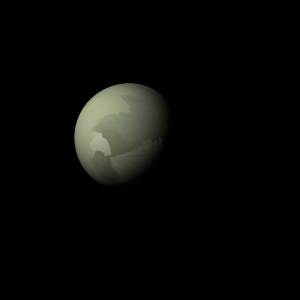|
|
Space Astro
|
Info for exoplanet "Jovo"
| Scientific (actual) data |
|---|
| Name | Kepler-153 b |
| Planet status | Confirmed |
| Radius | 0.261 |
| Orbital period | 18.8702 |
| Semi major axis | 0.129 |
| Discovered | 2014 |
| Updated | 2021-02-05 |
| Tconj | 2455010 |
| Impact parameter | 0.03 |
| Publication | Announced on a website |
| Detection type | Primary Transit |
| Alternate names | 2MASS J18495052+4815256 b, K00431.01, KIC 10843590 b, KOI-431 b, KOI-431.01, WISE J184950.52+481525.4 b |
| Star name | Kepler-153 |
| Right ascension | 282.46° |
| Declination | 48.26° |
| Mag j | 12.945 |
| Mag h | 12.483 |
| Mag k | 12.418 |
| Star distance | 465.53 |
| Star metallicity | -0.255 |
| Star radius | 0.89 |
| Star temperature | 5404 |
| Star alternate names | 2MASS J18495052+4815256, KIC 10843590, KOI-431, WISE J184950.52+481525.4 |
| Wikipedia article | Kepler-153 b |
Back
| |
| Fictional info (?) |
|---|
| Suggested name | Jovo |
| Planet type | Terrestrial |
| As seen relative to the fixed stars, it rotates on its axis exactly two times for every three revolutions it makes around Kepler-153.
One of this planet's unfriendly moons is inhabitated by large yet primordial bacteria, the "Fagiro Rone", that survive only by hunting another species called Yqoca in the shade. Fagiro Rone are closely similar to the Taweji-ros but have wings and vary in length from 70 to 170 mm. They can reproduce at temperatures from 10 to 60°C and also ultra violet light. |
| Estimated population | 1100000000 |
| Atmosphere | Oxygen | 96% |
| Water | 3.4% |
| Carbon dioxide | 0.36% |
| Methane | 0.001% |
| Atmospheric pressure | 60 bar |
 |
| Moon | Xunek'azi | Very small potato shaped ice comet |
| Google search for Jovo |
|
Website by Joachim Michaelis
|
|
|
|